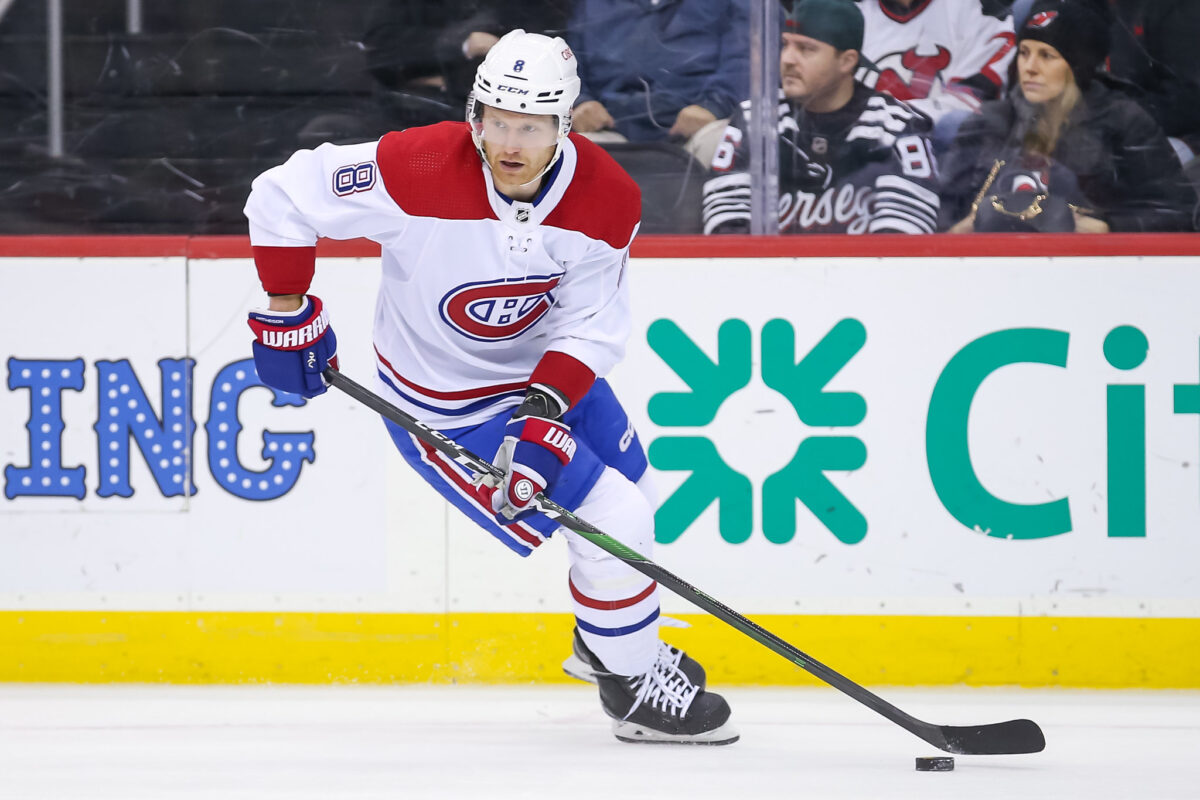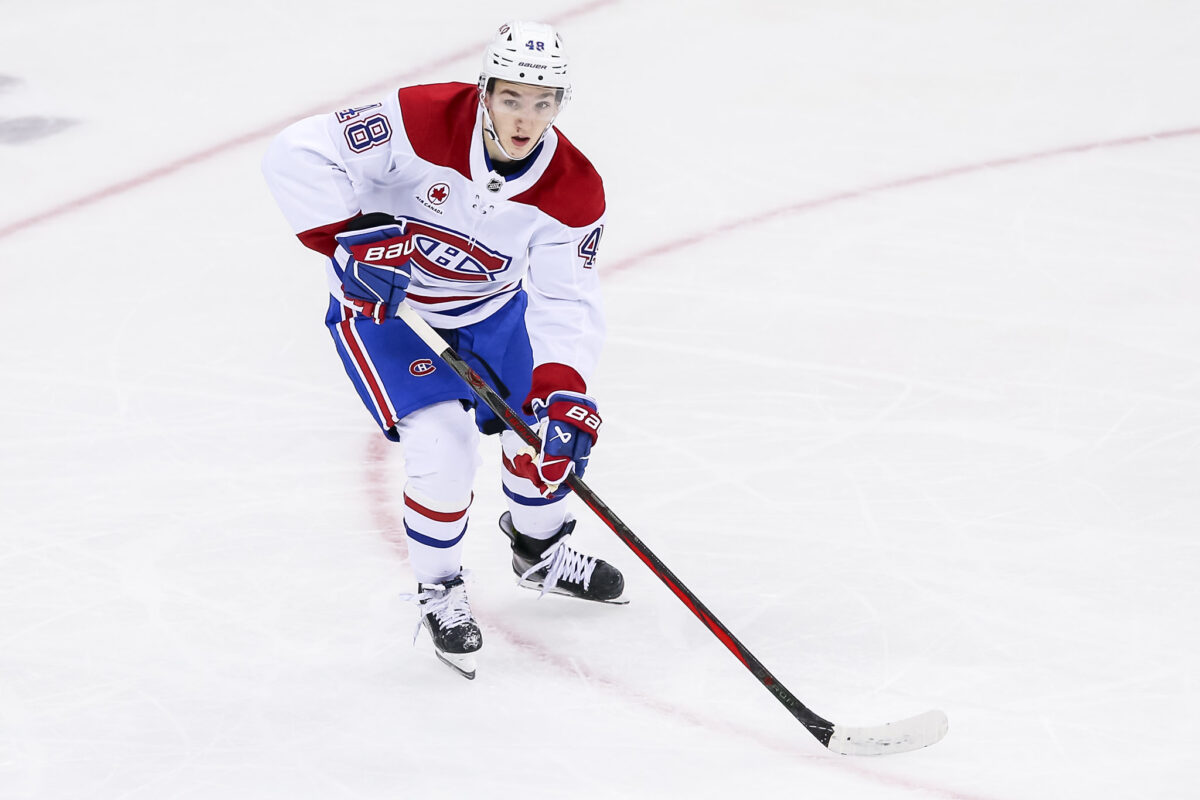The Montreal Canadiens and general manager (GM) Kent Hughes have some difficult decisions to make in the coming months. The team’s early 2024-25 season performances, leaving them in the NHL cellar, were not what was expected from the club early on. They, and the fans, were hoping for the team to be far more competitive, and even be in a battle to gain footing just outside of a playoff position. But, with one of the NHL’s youngest teams, featuring the youngest blueline, the position in the standings isn’t a surprise.
Related: Montreal Canadiens Building Themselves Into a Free Agent Destination
With the current youth movement, veteran support is necessary. However, the emergence of Lane Hutson means that Mike Matheson’s future is something to monitor, as he could be traded at some point, even if that means there will still be more growing pains with the younger skaters adjusting to the NHL.
Canadiens Must Choose, Size or Skill?
The one large advantage, no pun intended, of Matheson is that he has the size advantage over Hutson. But when looking purely at skill, Hutson has the edge. But the NHL is inching away from placing the main focus on size when it comes to assessing players. In the NHL, size is an attractive quality so long as it does not sacrifice the player’s speed.
Larger framed players tend to adjust more quickly to the NHL game due to the physicality and the impact of the faster pace on providing players more opportunity for 1-on-1 puck battles that rely somewhat on strength. Smaller players, who have the speed, need to adjust differently, using their hockey IQ to position themselves and their sticks to leverage their lower centers of gravity and speed to win their battles.

The sport evolves, and each era has a defining characteristic. The 1980s was the golden age for scoring. The 90s saw the rise of the dead puck era, where defensive plans such as the trap and goaltending equipment upgrades made life difficult on offences. Yet, in recent years, the game has become faster and more wide-open. This has directly impacted how teams approach the NHL Entry Draft.
Sports analyst, Nick Ashbourne, shared an in-depth review of this impact via RG.org. He broke down the NHL Draft over the last 20 years and found that teams are focusing primarily on skill early on instead of size, which was the top priority for many years. Oddly enough, that trend is somewhat different for the Canadiens. Looking back to the Bob Gainey Era as GM, he bucked the trend of focusing on size, signing players like Mike Cammalleri and Brian Gionta. He had some success selecting long-time NHL players in the draft such as Jaroslav Halak, Mark Streit, Sergei Kostitsyn and Yannick Webber.
Montreal was a leader in that trend, but now, they are looking the other way, looking for size early in the draft because size is still needed to help insulate smaller players. Cole Caufield and Lane Hutson are highly skilled and can be game-breakers, but not if they’re constantly outmatched physically. This is likely why Hughes has been going in the opposite direction of this trend, looking to add size early on in the draft, to ensure he can add impact players with that physical advantage. With the addition of larger players, such as Juraj Slafkovsky, Kaiden Guhle, and others, the smaller-statured players can have help in fighting those board battles and puck retrievals, allowing them to focus on their strengths such as shooting and puck distribution.
Canadiens’ Matheson Is Expendable
The Canadiens have plenty of talented defencemen coming up from the pipeline, and they all, in their ways, fit the vision of the modern NHL defenceman. A mobile, puck-moving two-way player that has as much of a focus on generating offence as they do defending because keeping a puck 200 feet from your net is a safe way to ensure fewer scoring chances. However, Hutson is the most skilled offensively, but also the most comparable to Matheson, which is where Hughes can take advantage and make a move from a position of strength.
The arguments seen on social media for replacing Matheson focus more on the power play where Hutson has the better Corsi percentage, and the shots through percentage are similar to Matheson’s but little attention is paid to the 5-on-5 impacts. Hutson and Matheson are nearly identical statistically in that regard as well. Hutson does bring more offensive opportunities with more high-danger scoring chances, which as a puck-moving defenceman, is an important skill.
However, Matheson is slightly more effective defensively. But, as someone with 10 seasons and over 500 games more than Hutson, that isn’t a surprise. Still, that difference isn’t as wide of a gap as some would expect, as the scoring chances against and high-danger goals against are nearly the same. Considering their average time on ice (23:49 for Matheson and 23:03 for Hutson) are also nearly identical after 17 games all points to the fact that the 20-year-old defenceman with only 19 NHL games under his belt is capable of shouldering the load Matheson does, so long as he is continued to be supported by a veteran right-handed defender like David Savard.

This may be a divisive viewpoint, but with Hutson’s arrival, trading Matheson makes more sense than trading Savard. While it is rumoured by many NHL insiders that it is Savard who is getting interest on the trade front, if they were told that Matheson was available at the right price, the rumour mills would explode as his value is at its peak. However, trading him isn’t something that must be done immediately.
Hughes has the option to remain patient and wait for Stanley Cup contending teams, or teams that hope to be one, to get into a bidding war for his services near the trade deadline. At 30 years old, he is still in his prime. He is under contract for this season and next at a team-friendly cap hit of $4.875 million. Plus, he is coming off of a career-high in points (62) and despite a slow start to this season with only 10 points in 17 games, he is still on pace for nearly 50 points, on the 10th worst scoring team in the NHL to this point.
The Canadiens’ focus on analytics and the application of that information in assessing a player’s development and on-ice impact plays a crucial role in a decision to supplant a veteran with a rookie and trade that veteran. Especially when it helps to show that the younger defenceman has a larger impact statistically at the age of 20 than a 30-year-old does. That youth projects to be far better in their prime, especially if given the right on-ice support and opportunities. So far this season, Hutson has been as impactful, and in some ways more so than Matheson. Despite that, or maybe because of that, Hughes has the luxury of time to allow Hutson to develop further, and to remain patient and wait for an offer on Matheson that will help advance the rebuild.
